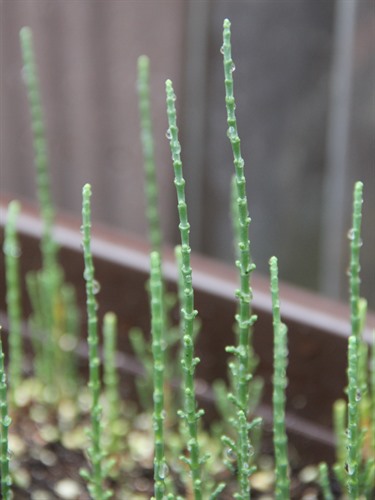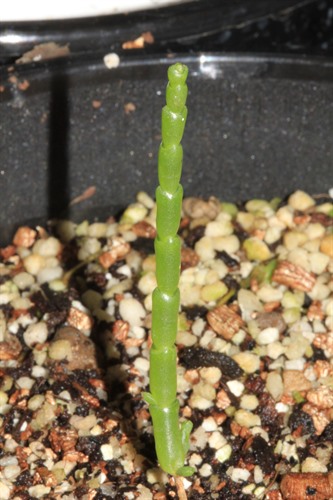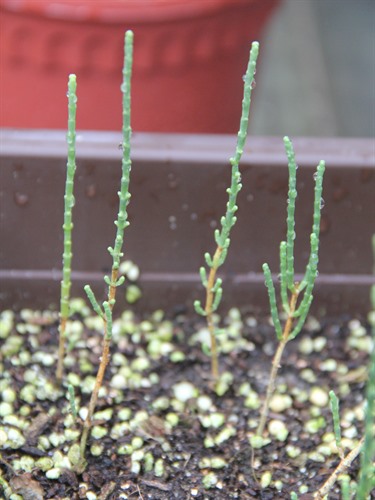
Name
Classifications and Characteristics
| Plant Division | Angiosperms (Flowering Seed Plants) |
|---|---|
| Plant Growth Form | Herbaceous Plant, Succulent Plant |
| Lifespan (in Singapore) | Perennial |
| Mode of Nutrition | Autotrophic |
| Maximum Height | 0.3 m to 0.4 m |
Biogeography
| Native Distribution | Western Europe |
|---|---|
| Native Habitat | Shoreline |
| Preferred Climate Zone | Temperate |
| Local Conservation Status | Non-native |
Description and Ethnobotany
| Growth Form | Bushy succulent up to 40 cm tall. |
|---|---|
| Foliage | The tiny, succulent leaves are only small protrusions off the side of the stem. |
| Stems | The narrow, cylindrical stems are highly segmented and held erect. Different forms vary in their tendency to branch. |
| Habitat | Occurs along the sandy coasts, salt marshes, and mudflats of Western Europe. |
| Cultivation | This species grows best in a well-drained, sandy soil. They are ideally harvested at 15 cm tall and can be repeatedly harvested by removing only the upper 10 cm and allowing the base to re-grow. |
| Ethnobotanical Uses | Edible Plant Parts : Edible Stems, Edible Seeds Food (Fruit or Vegetable): It is rich in vitamin C, has a salty flavour and can be eaten raw or lightly cooked. It is sometimes pickled, used as a garnish or added to salads and fish dishes. The seeds can be pressed to make a high quality oil. Medicinal: It is thought to be helpful to reduce flatulence and improve digestion, as well as treat obesity and kidney disorders. Others: In the 14th century, the plant was burned and the ashes were used to make soap and glass. |
Landscaping Features
| Desirable Plant Features | Ornamental Form |
|---|---|
| Landscape Uses | Coastal, Container Planting |
Plant Care and Propagation
| Light Preference | Full Sun |
|---|---|
| Water Preference | Moderate Water |
| Rootzone Tolerance | Well-Drained Soils, Saline Soils / Salt Spray, Alkaline high pH Soils |
Floral (Angiosperm)
| Flower & Plant Sexuality | Bisexual Flowers |
Image Repository
Others
| Master ID | 33652 |
|---|---|
| Species ID | 8066 |
| Flora Disclaimer | The information in this website has been compiled from reliable sources, such as reference works on medicinal plants. It is not a substitute for medical advice or treatment and NParks does not purport to provide any medical advice. Readers should always consult his/her physician before using or consuming a plant for medicinal purposes. |


